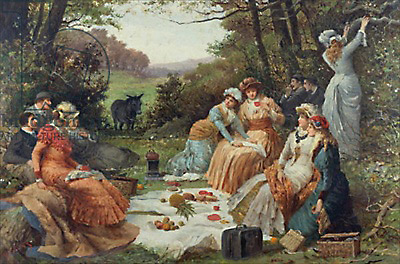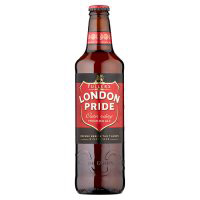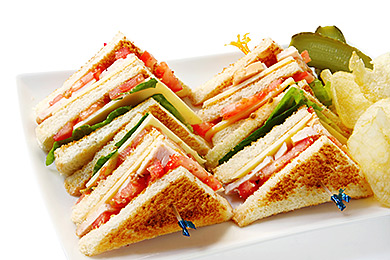A note on Good Sandwiches & Picnic Dishes by Ambrose Heath, featuring a description of the Bookmaker.
The first edition of the delightful Ambrose Heath’s Good Sandwiches & Picnic Dishes appeared in 1948 but displays a distinct and distinctive prewar sensibility, almost incongruously combined with an acute recognition that the rigors of rationing remain rampant. Times were tough: Heath plucks a plangent chord with some of his knowing notations. “When bacon is plentiful” precedes one recipe: “When there is plenty of bacon” is the disclaimer affixed to another, and the otherwise fastidious Heath recognizes that margarine may need to supplement or substitute for butter. (Heath 84)
As he notes with good humor, “this is the day of austere joys.” (Heath 83) Heath therefore takes care to be creative with humble ingredients and to stretch scarce ones where he can. As a consequence, perhaps unintended, he has constructed some creative combinations.
Before they appear, however, Good Sandwiches reprints “In Praise of Picnics,” which originally appeared in The Traveller magazine. The essay is worth reading for both its dry humor and sensible advice. A representative fusion of the two extolls the delights of outdoor dining in negative terms and by implication British food:
“No difficult choice of rendezvous awaits us, nor the cold stare of the hotel receptionist as glassy as the crystal cabinet that embalms her, nor the even stonier offerings of the so-called chef, who is too apt to conjure forth from the kitchen mausoleum his unappetizing fragments dolled up in his own idea of French culinary fashions.” (Heath 11-12)

Plan ahead.
Heath’s idea of a picnic differs from the image conjured by enthusiasts of rustic simplicity. Even though a picnic avoids formalities like restaurant reservations, as well as unpleasant service and food, it never should be spontaneous. “For picnics should always be planned ahead, so far as destination is concerned. Nothing is sadder than to set off hopefully without knowing just whither you are bound.” And “for all the unconventionality, comfort in a picnic is essential.” To this end a friend of Heath would spare no effort. For one picnic,
“his faithful chauffeur and factotum disembowelled our sacrificial chariot, heaving basket after basket from its illimitable depths in apparently unending profusion, and finally removing the very seats themselves from the car, so that in luxury and ease we could recline among the grass and enjoy the fare…. ” Heath 12, 13, 14)
On that occasion, in contrast to postwar “pinchbeck days,” the fare in question included “ foie gras and lobster and duck and Camembert cheese and three sorts of wine, for each of which (oh, crowning wonder!) fresh and appropriate glasses mysteriously appeared.” (Heath 14)
A picnic need not be quite so grand, as Heath’s fondness for sandwiches would attest, and the best passage from his celebration of it may be one that considers less extravagant liquid, the most British beverage other than tea. “There is another, if somewhat recondite, reason for picnic prearrangement, and it is to be found, surprisingly enough, in the pages of Richard Jeffries. In one of his essays he gives admirable counsel in this matter.” (Heath 16)
During a short life (tuberculosis killed him at age 38) Jeffries wrote essays, many of them published in the Pall Mall Gazette, history, children’s literature, fiction and science fiction, a manual of practice for “beginners in literature,” which in fact was a primer for cub reporters, and his autobiography. Clifton Johnson considered Jeffries “the most notable nature writer England produced in the nineteenth century” and Hamilton Wright Mabie went further by insisting in 1903 that Thoreau and Jeffries” are “the foremost recorders of Nature in America and England…. ” (Jeffries v, xi)
Much of Jeffries’ writing was autobiographical; much of it concerns the natural world and his intense connection to it. Beer also is a recurring source of pleasure in his work.
Back to Heath on Jeffries:
“He is out shooting with a friend, and in the secluded depths of the woodland remarks how very pleasant it would be to drink a glass of beer. His friend who is as thirsty as he and as unprepared looks upon this as a somewhat ill-timed jest, but his annoyance changes to delight when his host, leading him to a certain spot, produces a bottle of the precious liquid which he previously buried there.”
“There are indeed,” in Heath’s estimation, “far less agreeable practical jokes, and this one offers the enterprising picnicker food, or rather drink, for thought.” (Heath 16)

Freshly dug up and ready to drink.
Heath himself is thoughtful, and opinionated, on the subject to hand, and would disapprove of the oversized sandwiches that dominate American practice today. “When we think of a picnic, it is the sandwich that first generally springs to our mind. These simple and delicious morsels (for let us set our face at once against the ‘doorstep’) are the most popular adjuncts to a day in the country or at the seaside.” ( see the Note)
He likes sandwiches enough to recommend them for functions other than the picnic, including tea parties and small meals. (Heath 21) To that end Heath describes rolled, pinwheel, ribbon, chequerboard, open, toasted, hot and club as well as cold sandwiches. One of his favorites is the classic English Bookmaker, which he found in an unlikely place from an unlikely source.
“One would hardly expect to find a recipe for a sandwich in so august a volume as Escoffier’s Guide to Modern Cookery , but there it is, and it is of so exceptional a nature that I cannot resist quoting him in full in case any readers are ever so happily placed as to be able to make it.” (Heath 30-31)
Once again, this was the era of austerity, and so for Heath, taking the scarce and the expensive to make a Bookmaker created something special indeed. Escoffier in turn lifted his version from Alfred Suzanne, one of the very few authors to assemble a cookbook about English food, La Cuisine Anglaise , in French. It is difficult to find, has not been translated into English and is scarcely remembered today.
We will not join Heath in quoting Suzanne in full but the Bookmaker does deserve description. He cuts the heels off “an English tin loaf,” something like Pepperidge Farms Farmhouse White Bread, a third of an inch thick, butters the uncrusted side, then grills a seasoned thick steak before sprinkling it with grated horseradish and mustard to set between the slices of bread. Then he strings “the whole thing together like a galantine,” wraps it in “several sheets of blotting paper” and squeezes the parcel tight “under a letterpress.” We might use some bricks. After half an hour under pressure the bread will, Suzanne explains, “become saturated with meat juice, which is prevented from escaping by the covering of the crust.” (Heath 31) An enterprising restauranteur ought to bring back the bookmaker and make it the centerpiece of lunch or dinner.
Heath likes “the American Club Sandwich” in ten variations, a rather odd one substituting sliced cheese for the bread, but most of his preferences are not so robust. In common with late nineteenth to mid twentieth century British practice most of his sandwiches are simple and slim, and rely on soft, shredded or diced fillings, with or without a flavoring of compound butter.

Some nineteen varieties of sandwich use anchovy paste in combination with ingredients as varied as cheese, flaked smoked haddock, horseradish and blanched parsley. Eleven sandwiches use cream cheese, on of them paired with garlic (“For the very brave!). Four more use chicken livers; others use liver paste and sausage (offal was off the ration). Twenty-three combinations include mashed hardcooked egg; six use minced olives, one a sort of English piccadillo sandwich using raisins; and at least five feature canned tuna, which Heath calls “tunny fish” in the British style of his time. One of them, made with ‘Russian’ dressing and bacon, is somewhat strange and particularly good.
Another intriguing option? A “Beef a la Wellington” sandwich fillng, which in the hands of Heath bears no resemblance to Beef Wellington per se. It calls for “minced cold beef,” and it is unclear whether the meat is cooked or raw but given the additional ingredients may be tartare. They are anchovy, the tunny, both pounded to puree, minced olives, chopped capers and ‘sieved’ hardcooked egg yolks. Notwithstanding its incongruent ingredients in American eyes the Wellington sandwich sparkles in either the raw or cooked incarnation.
Heath has twenty-six “sandwich butters.” In another reflection of straitened times, each recipe begins with a scant two ounces of butter. Nearly four decades on, Michael Smith would base his compound butters on double the amount. Some of Heath’s sandwich butters use citrus juice or zest, alone or in combination with items like chives, mint, olives, parsley or fish. Others use cheeses, one anchovy (of course), and Worcestershire features in two. These compound butters add an appealing dimension to sandwiches and it remains a mystery why they have not enjoyed revival.
Heath’s title includes Picnic Dishes and although they amount to less than a quarter of the book represent a welcome bonus. Heath makes a mean meatball from beef with English seasonings of ginger and mace. He deep fries not only whitebait but apples and Jerusalem artichokes “in exactly the same way as potatoes” (Heath 87), fries water crackers with curry powder in butter and heats his anchovy biscuits with cayenne. None of the ‘dishes’ or sandwiches for that matter is difficult and many imaginative. Our advice; buy the book.
Decent old copies of Good Sandwiches cost considerably less than ten bucks and the lovely little book deserves a perch on the kitchen shelf. That is true more generally of Heath’s prodigious culinary output. He is, as Jamie Oliver has quipped, the best food writer you never have heard about.
Directions to make Ambrose Heath’s tuna with bacon, and Wellington, sandwiches, appear in the practical along with his recipes for meatballs and for curried crackers.
Note:
The reference to a ‘doorstep’ sandwich is likely in error. In British usage, a ‘doorstop’ denotes an oversized sandwich.
Sources:
Ambrose Heath, Good Sandwiches & Picnic Dishes (London 1948)
Richard Jeffries, An English Village: A New Edition of Wild Life in a Southern County Cambridge MA 1903)

